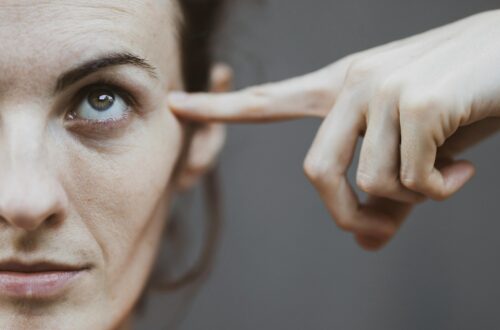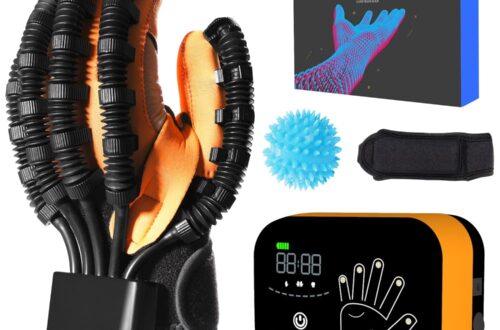There are several highly rated apps available that can significantly aid in stroke recovery, addressing various aspects such as speech therapy, hand recovery, cognitive deficits, vision loss, and overall health management. Here’s a comprehensive overview of some of the best options: Speech Therapy and Aphasia Hand Recovery and Motor Skills Cognitive Deficits Vision Loss General Health and Wellness Additional Recommendations Each of these apps addresses specific needs and challenges faced by stroke survivors. Depending on your specific recovery goals and areas you wish to improve, you can choose the apps that best suit your needs. Remember, consistent use and engagement…
-
-
Utilizing apps and digital tools designed for stroke rehabilitation can significantly aid in tracking and enhancing the recovery process. These tools offer structured exercises, progress tracking, and personalized guidance, making them invaluable for stroke survivors. Here are the top 10 apps that can be particularly beneficial after a stroke: Each app offers unique features tailored to different aspects of stroke recovery, from physical mobility and speech therapy to cognitive enhancement and mental well-being. Incorporating these tools into the rehabilitation process can lead to more structured, effective, and engaging recovery experiences.
-
Recovering from a stroke is a journey marked by patience, perseverance, and a positive mindset. One of the most effective ways to navigate this journey is by setting achievable goals and celebrating progress, no matter how small. This approach not only fosters a sense of accomplishment but also significantly boosts morale and motivation. In this detailed discussion, we explore the art of goal-setting and the joy of celebrating each step forward in the recovery process. The Power of Setting Achievable Goals Celebrating Small Victories Tracking Progress: The Pathway to Visible Improvement Incorporating Flexibility in Goal Setting Encouraging a Growth Mindset…
-
What is a Stroke? A stroke occurs when the blood supply to part of the brain is interrupted or reduced, preventing brain tissue from getting oxygen and nutrients. This can happen due to a blocked artery (ischemic stroke) or leaking or bursting of a blood vessel (hemorrhagic stroke). Some people may experience only a temporary disruption of blood flow to the brain, known as a transient ischemic attack (TIA) or “mini-stroke.” Effects of Stroke The effects of a stroke depend on several factors, including the stroke’s location in the brain and the amount of brain tissue damaged. Common effects include:…
-
Stroke rehabilitation is a really important step that starts right after someone has a stroke. It helps people who’ve had a stroke get back to their daily lives and feel better. The brain can adapt and heal itself, and this is a big part of recovery. Easy Guide to Stroke Recovery Making a Plan That Fits Each Person Since every stroke is different, the therapy plan is made to fit each person’s needs. The plan can change as the person gets better. Steps in the Recovery Process Healthy Lifestyle Changes Eating healthy, staying active, and managing health issues like high…
-
There are inspiring stories of different stroke survivors from across the internet is a significant task, highlighting a wide range of experiences and recovery journeys. Here is a compilation of various resources where you can find these powerful and motivational stories: These resources collectively offer a rich tapestry of stroke survivor stories, each contributing to a greater understanding of the stroke recovery process and the resilience of the human spirit. They serve not only as a source of inspiration but also as an educational tool for those seeking to understand the varied impacts of stroke and the importance of early…
-
Maintaining a positive mindset after a stroke is crucial for rehabilitation and overall well-being. While it’s a challenging journey, there are numerous strategies and practices that can help stroke survivors and their caregivers remain optimistic and hopeful. Below is a comprehensive guide on how to remain positive after a stroke: Understanding Stroke and Its Impact Embrotional Well-being Setting Goals and Celebrating Progress Building a Support System Engaging in Rehabilitation Focusing on Nutrition and Health Adopting a Positive Mindset Engaging in Enjoyable Activities Adjusting Lifestyle and Home Environment Educating Friends and Family Maintaining a Routine Seeking Inspiration Understanding and Managing Limitations…
-
Introduction: The journey of a stroke survivor is often marked by immense challenges and profound transformations. In sharing the stories of those who have faced and overcome these obstacles, we can find inspiration and hope. This blog highlights the resilience and determination of individuals who have navigated the difficult path of stroke recovery, offering encouragement to others facing similar struggles. Marina Bradshaw’s Story of Love and Resilience Marina Bradshaw’s life was turned upside down when her husband, a strong and healthy 52-year-old farmer, suffered a stroke. The experience brought about dramatic changes in their lives, testing Marina’s faith, relationships, and…
-
A stroke can bring about significant changes not only in physical abilities but also in emotional well-being. Understanding and managing these emotional changes is a crucial aspect of recovery. In the aftermath of a stroke, individuals often experience a wide range of emotions, including anger, sadness, frustration, and anxiety. This emotional upheaval is a natural response to the sudden and often life-altering event of a stroke. Here, we delve into the intricacies of emotional well-being post-stroke, emphasizing the importance of accepting emotions and seeking professional support. Understanding Emotional Responses After a Stroke Accepting and Acknowledging Emotions Seeking Professional Support Building…
-
Early therapy after a stroke is a gentle yet critical phase, where the primary focus is on regaining basic movements. This stage is all about laying a strong foundation for recovery. It’s a time of patience and gradual progress, where each small step counts significantly towards the journey of healing. In this initial period, therapists concentrate on helping patients relearn fundamental physical skills. These might include simple tasks like holding an object, sitting up, or standing. The beauty of this process lies in its simplicity; every movement is a step towards regaining independence. Equally important in early therapy is the…










